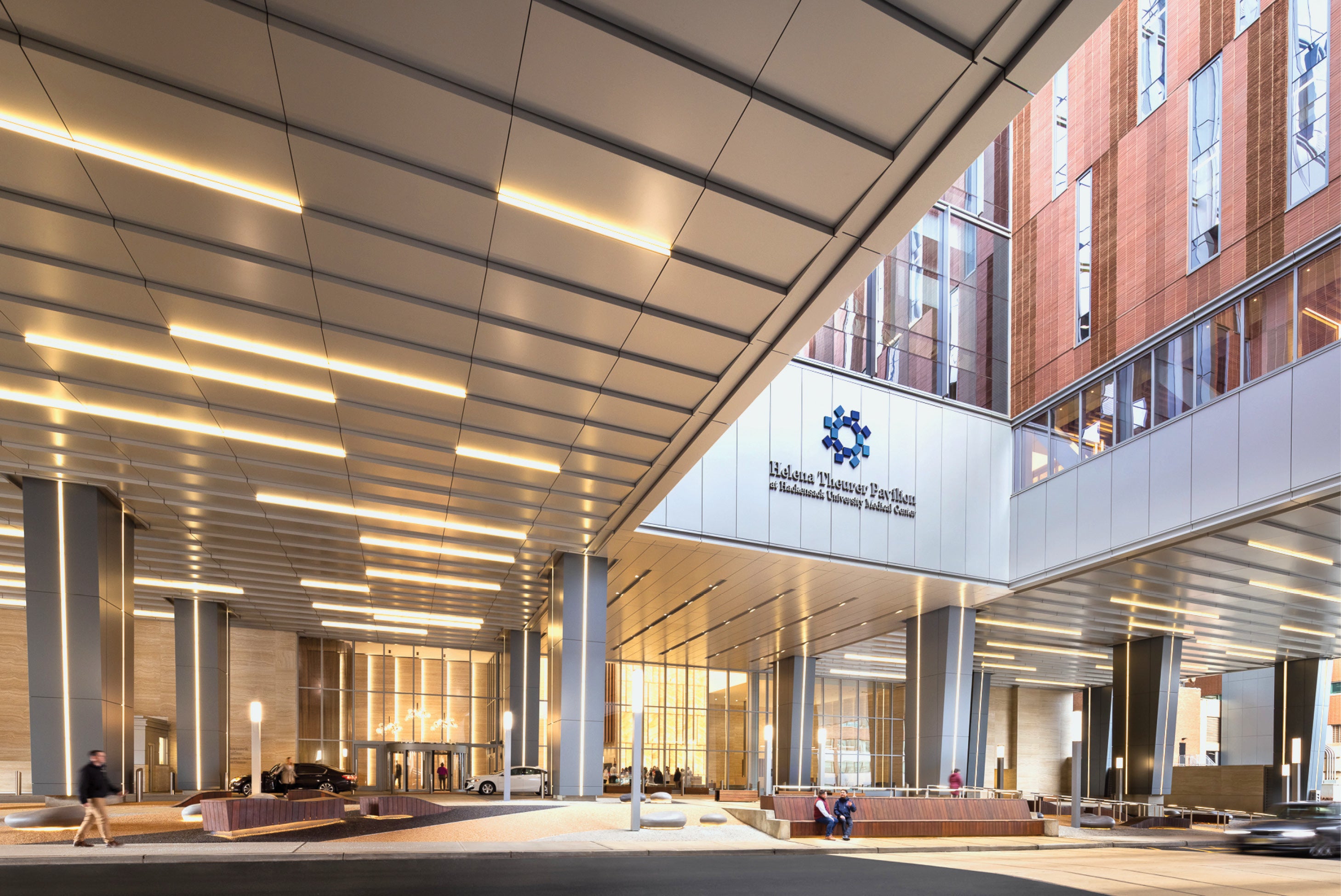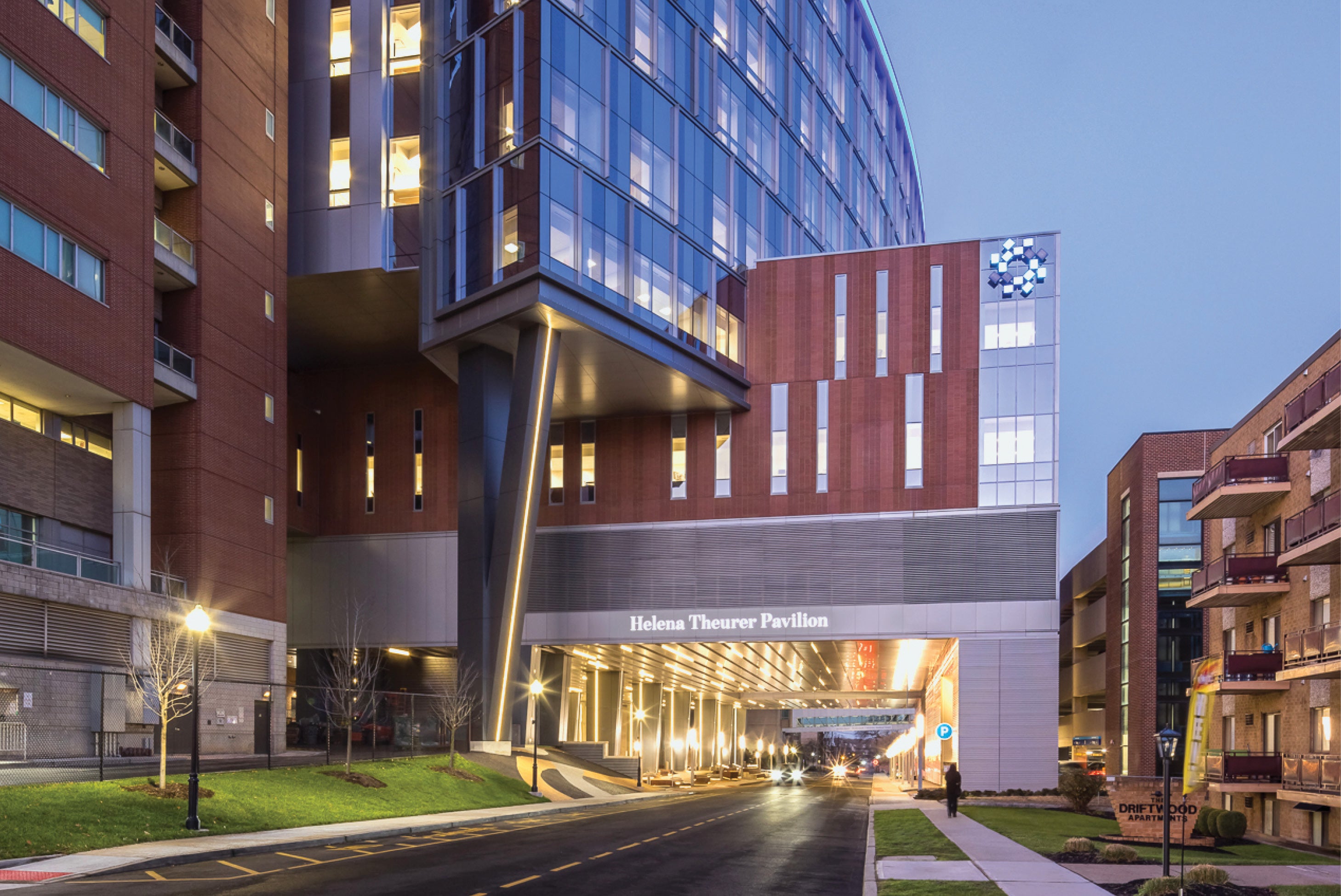Building a ‘hospital of the future’

Images by Mauricio Rojas
The new Helena Theurer Pavilion is transforming the Hackensack University Medical Center campus and expanding its ability to provide world-class acute care. “This is the hospital of the future. As the population ages, for those 65 and older, more surgical procedures are going to be necessary,” Robert Garrett, president and CEO of Hackensack Meridian Health, said during a recent tour.
As the largest health care expansion project in New Jersey history, the $714 million, nine-story “smart hospital” contains 24 operating rooms, 75 intensive care beds and 150 medical-surgical private patient rooms, including a 50-bed orthopedic institute. Designed collaboratively by RSC Architects (overall project architect of record, and core and shell architect) and Page (design and medical planning architect, and architect of record for the interior build-out), the 530,000-square-foot hospital offers best-in-class health care for Garden State residents and includes interoperative magnetic resonance imaging, the ability to have negative-pressure patient rooms, and computed tomography scanning on intensive care unit floors for ease of access.
Rapid prototyping with full-scale mock-ups and review by a multidisciplinary team led to an ideal design of a pass-through nurse server to support each patient room. “Using Lean thinking, 2P and 3P processes, and evidence-based design approaches, the design and clinical teams were engaged in more than a thousand hours of design meetings to push the boundaries of innovation and incorporate clinical input into the design,” says Akshay Sangolli, AIA, ACHA, EDAC, LEED AP BD+C, principal and senior medical planner at Page.

Images by Mauricio Rojas
The tower connects to an existing parking deck, minimizing its footprint. “Essentially, it took the air space above the street to manifest this project,” says Tushar Gupta, FAIA, NCARB, design principal and health care sector leader at Page. “This required incredible structural design solutions that allowed the building to span the street as well as create a platform for the building above.”
The team also aimed to maximize natural light. “We created a light well in the middle of the building that allowed natural light to penetrate,” says Gupta. Where the tower springs off from the base of the building, a green roof has been planned with expansive views of Manhattan.
Sustainability and environmental stewardship were priorities from the start, and the tower is on track for LEED Silver certification. Taking cues from nature, the color scheme of patient floors evolves from “the grasses and earth up toward the sky” and incorporates graphics of local flora and fauna.
“The new building is a wonderful piece of architecture that offers best-in-class health care,” Gupta says. “I couldn’t be prouder of our team and our partners, or more grateful for being able to play our part in bettering the lives of patients and the community who will be treated in this spectacular place of healing.”
WANT TO BE FEATURED? Visit the American Society for Health Care Engineering's Architecture for Health Showcase to learn more about participating.




